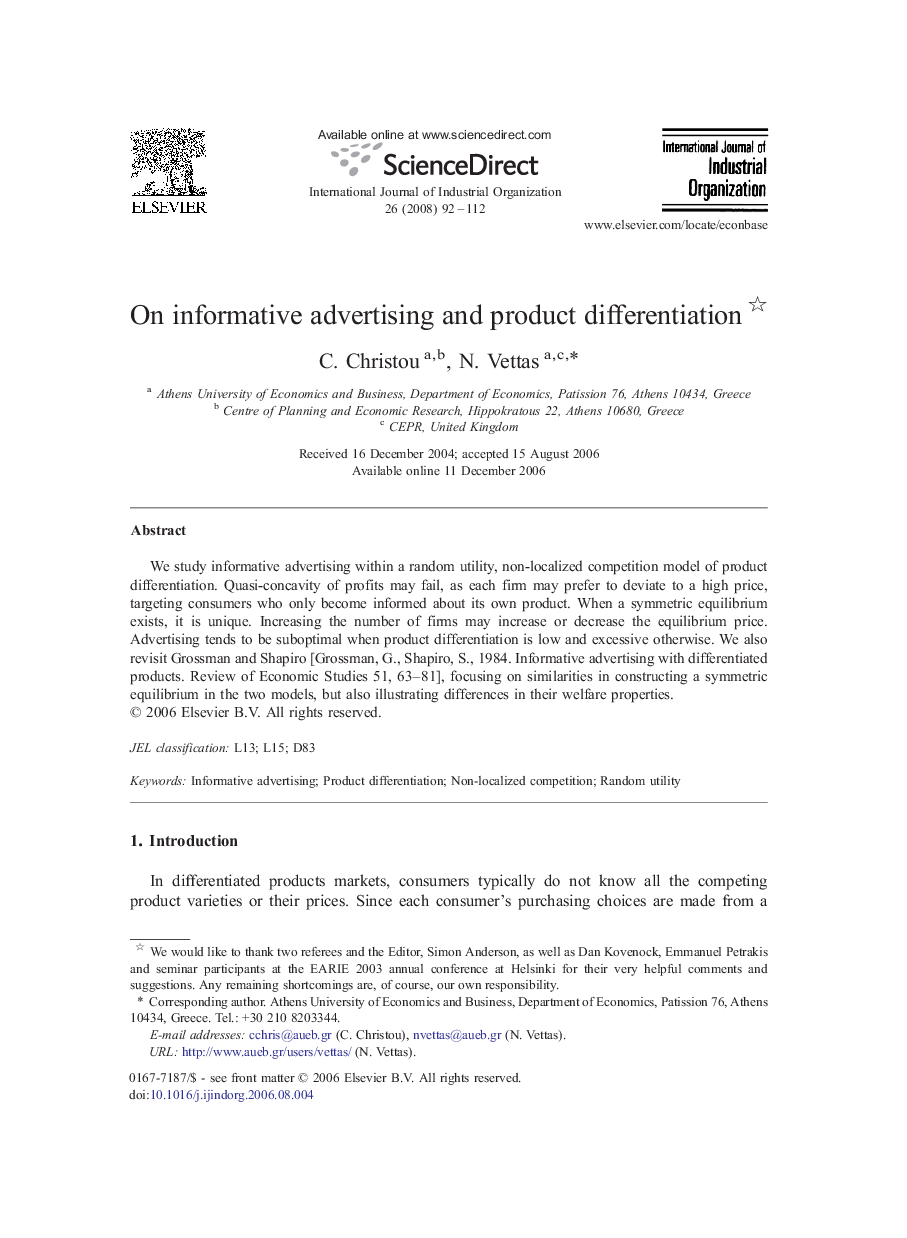| Article ID | Journal | Published Year | Pages | File Type |
|---|---|---|---|---|
| 5078550 | International Journal of Industrial Organization | 2008 | 21 Pages |
Abstract
We study informative advertising within a random utility, non-localized competition model of product differentiation. Quasi-concavity of profits may fail, as each firm may prefer to deviate to a high price, targeting consumers who only become informed about its own product. When a symmetric equilibrium exists, it is unique. Increasing the number of firms may increase or decrease the equilibrium price. Advertising tends to be suboptimal when product differentiation is low and excessive otherwise. We also revisit Grossman and Shapiro [Grossman, G., Shapiro, S., 1984. Informative advertising with differentiated products. Review of Economic Studies 51, 63-81], focusing on similarities in constructing a symmetric equilibrium in the two models, but also illustrating differences in their welfare properties.
Related Topics
Social Sciences and Humanities
Economics, Econometrics and Finance
Economics and Econometrics
Authors
C. Christou, N. Vettas,
